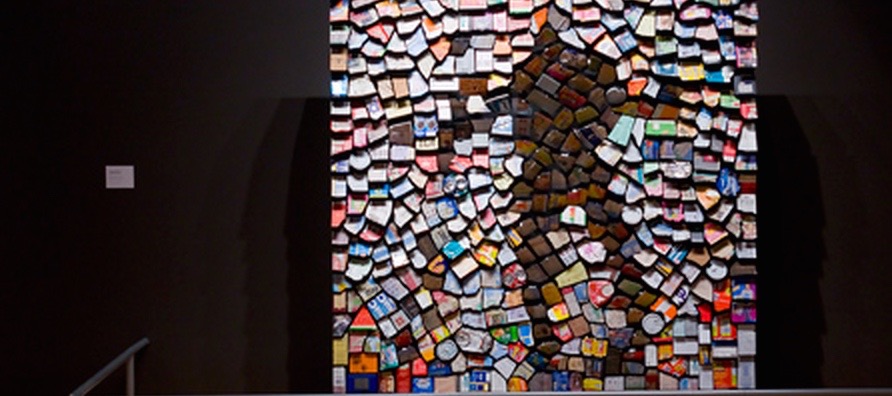CanadianArt.ca – December 8, 2011
by Richard Rhodes
Two years ago, curator Marla Wasser put together a rich exhibition that focused on popular appropriations of the work of Andy Warhol. It was an exhibition that turned the tables on pop art to show an art shaping a culture, instead of the reverse. This fall, Wasser brings a similarly wide perspective to a new group exhibition designed to raise questions about the aesthetic purposes of fusing art with experimental technology.
In the show, Canadians David Rokeby and George Legrady join international artists Jim Campbell, Manfred Mohr, Alan Rath, Daniel Rozin and Peter Vogel in an entertainingly interactive venture. It all starts in the lobby with a large piece by Legrady that features a Flickr-like assemblage of web and cellphone photos generated by audience participants; the photos are shaped and sorted by a program designed by the artist. This interdependency between art and audience is one of the main themes of the show and is a metaphor for our cultural dependency on technology.
In the hands of Rokeby—shown in a darkened, lower-level space—a riff on this theme can be a dance of black-light-lit visitor bodies learning to “play” the musical, sound-generating elements of the work. Or in the hands of pioneers like Manfred Mohr, who has been creating mechanical paintings since the 1960s, it can be a mysterious lesson in how hidden algorithmic programs can play out dramas of pictorial evolution and change. Rath, Rozin and Vogel each bring a physical dynamism to their object-making, where technological innovation blurs with aesthetic innovation. What one comes to reflect upon is a kind of meta art-making, where the machine represents our understanding of how objects make meaning.
In the case of San Francisco–based artist Jim Campbell, Wasser’s exhibition rises to a whole new level; this is an artist who also brings a rich emotional dimension to the experience of his work. Campbell (who will be leading a public tour of the show on December 11 at 11:30am) finds new ways to strip and reassemble video images to create haunting three-dimensional experiences. In these works, any notion of image-making is held in a physical suspension that underscores its difference from perception, as Campbell takes recording technology and attenuates it into moments of developing consciousness or epiphanies. His work can seem full of fleeting ghost images—but he makes it clear that these “ghosts in the machine” are the shadow of a human mind at work.
